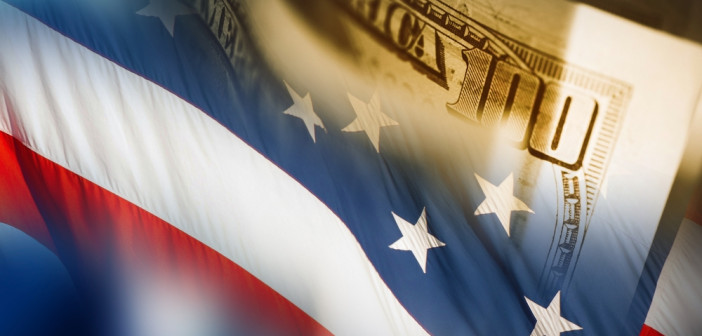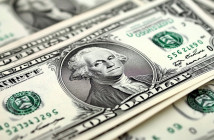There’s plenty of data that says the economy is doing well but inflation still leaves consumers angry and frustrated.
Confused about the economy? You’re not alone.
Here is what Federal Reserve Chairman Jerome Powell said last week in the Netherlands regarding the higher-than-expected inflation seen in the first few months of 2024: “It may be that (high interest rates) take longer than expected to do (their) work and bring inflation down.”
It’s no wonder that ordinary Americans and the most powerful financial officials in the world are having a hard time figuring out an economy that has zigged and zagged since the beginning of the COVID-19 pandemic four years ago. One day, the data suggests the economy is growing too fast, requiring higher interest rates, the next the data points to a slowdown and a need to cut rates. All the while, consumers confront higher prices and borrowing costs, whether it is to buy a house or use a credit card.
The Good News
The three major stock market indices – the Dow Jones Industrial, the Nasdaq and the S&P 500 – closed at record levels last week. Unemployment has been under 4% for 27 months, a streak that last occurred in the 1960s. Although it slowed in the first quarter, the nation’s gross domestic product hit $28.28 trillion – up from $19.19 trillion in the first quarter of 2020. U.S. household wealth reached a record $156 trillion, driven by increased values of investments.
“Household wealth remains strong and overall consumption growth robust,” the Blue Chip Economic Indicators survey for May found, with participants seeing only a 30% chance of a recession in the next 12 months.
The Bad News
Americans are paying much more for just about everything from gasoline to home insurance to rents. Inflation, now at an annualized rate of 3.4%, is still well above the 2% target set by the Fed and higher than the 1.8% level in 2019. And after three years of high inflation, the cumulative effect is that consumers are paying 20% more and higher for many necessities.
“I think the overall price level is present on everybody’s minds,” says David Page, head of AXA Investment Managers’ Macro Research team. “There are different sectors of society that are doing better while others are doing worse.”
The Congressional Budget Office on Tuesday released a study of how inflation has affected the purchasing power of consumers using a basket of goods and comparing price and income growth from that year through 2023. The results might be surprising to some.
“For households in every quintile (or fifth) of the income distribution, the share of income required to pay for their 2019 consumption bundle decreased, on average, because income grew faster than prices did over that four-year period, ” the CBO said.
“Households in the top income quintile had the largest decline, on average, in the share of income required to pay for their 2019 consumption bundle over that four-year period,” it found.
Those in the lowest income group saw the share of their after-tax income required to buy the basket decrease by 2% from 2019 but for those consumers at the top end of the income spectrum the decline was 6.3%.
CBO noted that during the four-year period there was a marked shift beginning with the pandemic in the types of items purchased, with long-lived durable goods being bought as people stocked up on furnishings and other big-ticket expenditures. By 2023, that had shifted significantly toward services such as eating out, travel and personal care.
That is also reflected in credit card usage, which has soared to record levels as interest rates on them have also increased significantly. But “super prime” card users, those with credit scores of 780 and above, tend to pay off their cards each month at a greater rate than those who have lower scores and incomes.
While the total balance outstanding on credit cards now sits above $1 trillion, prompting many economists to sound the alarm about the overstretched consumer, the year-over-year growth rate has slowed, says Charlie Wise, senior vice president of research and consulting at TransUnion.
From 2022 to 2023, the growth rate of balances was 19.4%. Now, it is 11.2%. “A lot of the spending has shifted, people are spending more on dining out, travel and other experiences,” Wise adds.
There are some signs of price moderation. April’s consumer price index came out on Wednesday and it showed that food prices were unchanged for the month. Food at home, or groceries, actually fell by 0.2%. On an annualized basis, food price inflation is now back to where it was at the start of the pandemic in March of 2020.
“Not only did food inflation not occur (in April), but categories impacted by avian flu (eggs and poultry) saw significant pricing decreases since the last report,” said Matt Pavich, senior director of strategy and innovation at Revionics, a company that makes price optimization software for retailers. “Multiple categories such as apples, citrus fruit, peanut butter, and coffee are less expensive today than a full year ago.”
In fact, several categories of items have fallen in price from a year ago, including new and used cars, dairy products and airline fares.
A Lot Depends on Who You Are, Where You Live and What You Buy
While overall inflation was 3.4% in April, some areas of the country saw higher prices while some saw costs moderate to a level below the national average.
South Florida, for example, saw inflation of 4.5% while Phoenix and Denver came in at 2.6% and 2.8%, respectively.
While groceries saw some price moderation in April, those renewing their auto insurance saw a 22.6% increase, bringing the overall increase since the start of 2020 to 47%. Smokers are paying 6.7% more, but drinkers of alcoholic beverages are facing an increase of only 2%.
It also matters whether you are making big purchases that have to be financed. Housing is a prime example of this. While mortgage rates to purchase a home today hover around 7%, the average mortgage rate on existing mortgages is a low 3.8%, the result of the many homeowners who refinanced at very low rates during the pandemic.
There’s some indication consumers are adjusting their buying habits to cope with higher prices – either out of necessity or choice, which is something that could help to ease inflationary pressures in the future. Walmart Chief Financial Officer John David Rainey said the giant retailer was seeing strong sales growth from higher income consumers buying groceries.
“It’s roughly 4.3 times more expensive to eat out than it is to eat at home,” he told CNBC. “And that’s benefiting our business.”
On Monday, Target acknowledged that consumers were balking at higher prices and said it would lower prices across the board on 5,000 items, many of them in the grocery and household goods categories.
“As a consumer, the first thing you would do is trade down, then second you would not buy it, the third thing is now you see companies responding,” said Tracy Bell, chief investment officer at First Horizon Advisors.
Data collected from credit and bank card users show people are spending less per purchase, whether because of lower prices or because they are choosing to forego certain more expensive items, says Michael Gunther, vice president and head of insights at Consumer Edge, which tracks spending on behalf of retailers and other clients.
Looking at the most recent quarterly data, Gunther says the year-over-year change in average spend per purchase moderated by 0.7% between Q1 and Q2.
“Food and beverage stores have seen a pretty significant moderation in pricing growth,” Gunther says. “You definitely see a trade down, fast fashion is outperforming luxury.”
Full-service restaurants and sporting goods stores are seeing a pinch, Gunther says, while online retailers, pet and auto parts stores are still enjoying growth.
There will be more insights this week as the Fed releases the minutes of its May meeting, where it kept interest rates unchanged at their highest levels since the 1980s. But the bond market opens the week with the yield on 10-year Treasury below 4.5%. That is down half a percentage point from the peak it reached in October of last year.
Could it be that the tide of inflation has turned or will it be just another head fake to confuse consumers?




